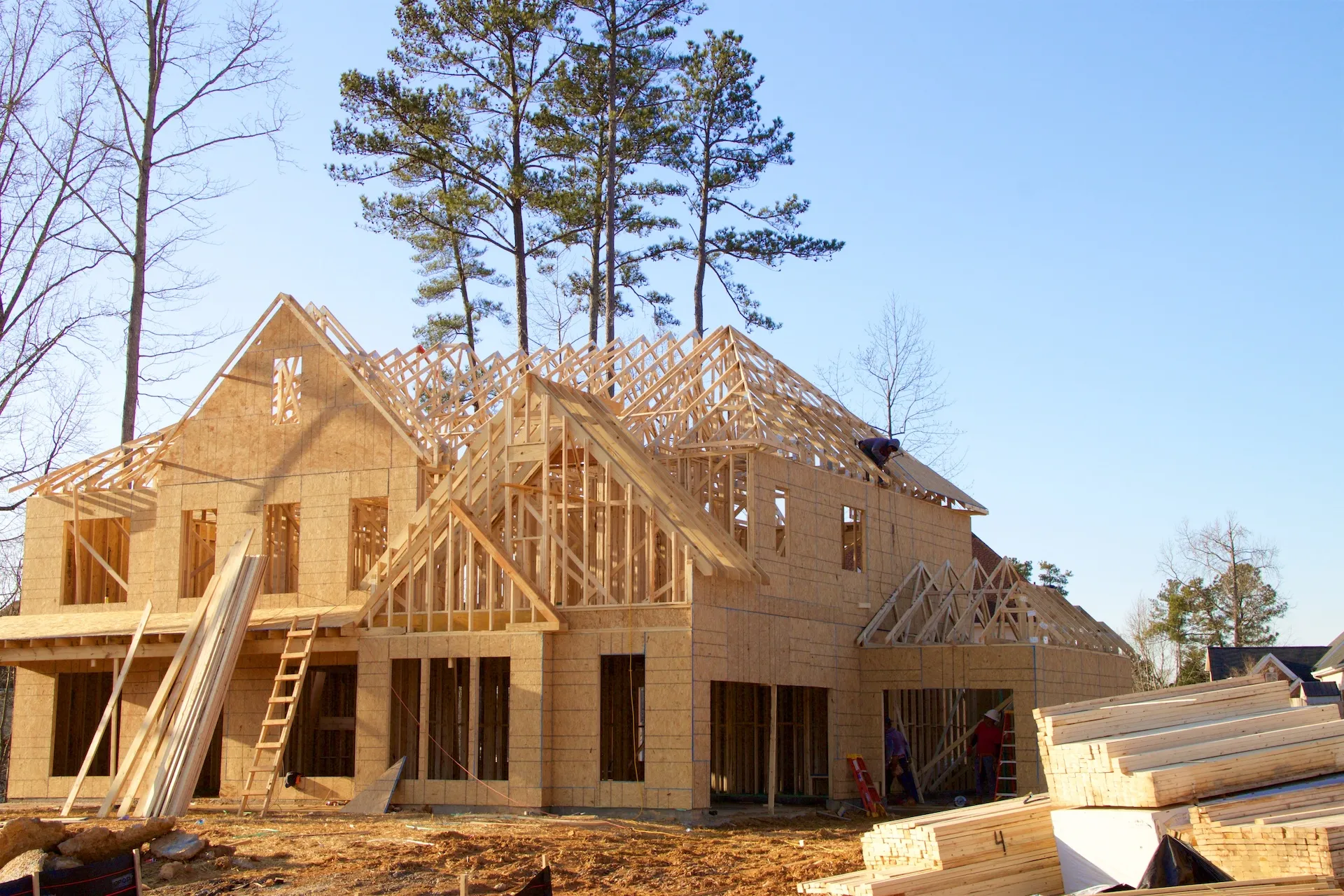Timber frame construction, future-proof construction with renewable resources.
Building with wood vs solid traditional construction.
Innovation and renewal are challenges in every industry, including the construction industry. Due to the tradition of Flemish buildings based on solid structures, wooden buildings are still too often seen as an outlier.
The Flemish architectural tradition is characterised by solid building materials. In particular, concrete, quick masonry and brick facades. Like any system, this design has its strengths and weaknesses. Thermal inertia, excellent acoustic performance and plenty of contractor know-how and experience are just some of the many advantages.
But there is also a downside. The production of large quantities of building materials is energy-intensive and the extraction of raw materials is associated with considerable environmental impact. Transporting these almost literally heavy materials has a negative impact on the LCA (Life Cycle Assessment). At a time when energy prices are skyrocketing and the relentless breath of climate change is breathing down our necks, these drawbacks weigh heavily on us.
Although timber construction is not as common as solid construction in our region, it has many undeniable advantages over conventional construction. From today's social perspective, the sustainable aspect of timber construction is perhaps the most important asset. Wood has many advantages because it is organic, basically inexhaustible (because it regenerates) and can also store large amounts of CO2.
But there are further advantages. Timber construction is equivalent to dry construction. Not only does it require less water during fabrication, but during the construction phase, there is significantly less moisture in the structure, so the building reaches its normal equilibrium position in relation to moisture faster.
Timber structures are also circular. The various components are easily mechanically connected and can be disassembled and fully reused. From a linear story (manufacture, use, demolition, disposal) you automatically arrive at a circular story. (manufacture, use, dismantling, reuse).
Summary of benefits:
- Basically inexhaustible raw material and renewable if it comes from sustainably managed forestry (FSC, PEFC, etc.).
- Significantly less energy required for production compared to concrete, for example
- Due to the high degree of prefabrication, timber construction is usually the faster construction method.
- Timber construction = dry construction, i.e. significantly less moisture in the building
- Timber = lightweight construction. This provides a lighter base. Therefore, wood is ideally suited for constructing new floors.
- Excellent for circular structures
And what are the disadvantages?
It depends on how you look at it. Of course, there are a number of things to consider when building with wood.
The main difference between timber construction and traditional solid construction is its own weight. The low deadweight of wood has many implications that deserve due consideration at the design stage. For example, when it comes to acoustics, timber structures generally perform worse than traditional solid construction. Due to their low mass, they are particularly sensitive to airborne noise. Therefore, the building shell should be a well-thought-out construction according to the mass-spring-mass principle.
Impact sound also tends to propagate through the structure. Again, good performance can be achieved by separating the different layers.
Due to the light weight of wood, the heat capacity of wooden structures is also more limited than usual. Therefore, the damping effect of solid structures (think of old church buildings) is not available. Targeted measures such as sufficient insulation, good ventilation and the installation of shading can fully compensate for the lack of heat capacity.
Conclusion?
Wooden architecture is "future-oriented" architecture. In the social context of climate change, the energy crisis and the resulting costly manufacturing processes of many traditional building materials (concrete, brick, roof tiles), timber construction has become a serious alternative to traditional building systems.
Thoughtful design based on the strengths of timber construction is essential, but the end result is sustainable construction with a small ecological footprint.

